What is Conversion Copywriting?
Yes! Send me a free guide.
Grow your business by 300%. Start your free 30-day trial.
Today only: 20% off everything! Shop now!
Join the 400+ businesses that got a proposal from us last month. Get my free proposal!
Conversion copywriting communicates a single, simple message that is so enticing that the audience is convinced to take you up on your offer, whether it is filling out a contact form, adding an item to their shopping basket, subscribing to a newsletter, or sharing on social media.
This type of copy relies on your knowledge about the audience’s needs, desires and fears to direct them towards a single action.
Great conversion copywriting:
- Grabs the reader’s attention
- Retains the reader’s attention
- Persuades the reader to take action
To put it bluntly, if your digital marketing efforts don’t generate sales, they’re useless. That’s why conversion copywriting is so critical to conversion rate marketing. Get people to convert – it’s your bread and butter!
Conversion copywriting is one aspect of Conversion Rate Optimization (CRO) in digital marketing. Even the most kick-ass copy doesn’t stand alone; web design, platform, and user experience are other aspects that influence how compelling your offer is to your audience. One thing at a time, though, so let’s focus on the copy for now!
Since conversion copywriting is focused on a specific conversion goal, conversion rate optimization best practices look more like a scientific approach than a creative process and has 3 steps: performing research and analysis, crafting a message, and testing, testing, and more testing.
1. Research and Analysis

Get to Know Your Audience
To understand what would motivate your audience to convert, you’ll need to get into their heads. How? Research!

Target Audience
If your business or your client has a well-defined target audience, maybe even a marketing persona, that’s perfect! If they don’t, this is your first step towards a solid conversion rate optimization strategy.
You’d want to know:
- Information – Demographic information such as age, gender, marital status, interests, online behaviour, and other relevant information.
- Knowledge – How much do they know about product/service/topic? Have they recognized that they have a problem? Do they know what a solution might be and what options they have?
- Problem – What is the audience struggling with? What has led them to seek a product/service? What is the problem you’re solving, and how does it help resolve the issue your audience is facing?
- Motivation – What does your audience want? How can your product help your potential consumers achieve their goals? More productivity, increased profitability, more leads, etc.
- Fears – Being penalized, wasting money with no results, or what is your audience concerned about and how can you alleviate their fears?
Audience Research
Even with a well-established audience profile, it’s helpful to do some additional research.
Go to places where your audience talks about the product/service and listen in. Social media, review sites, relevant forums such as Reddit, and even book reviews for books on the same topic as your key offering are often goldmines of information.
Here are some examples of customer conversations from United’s Facebook page.
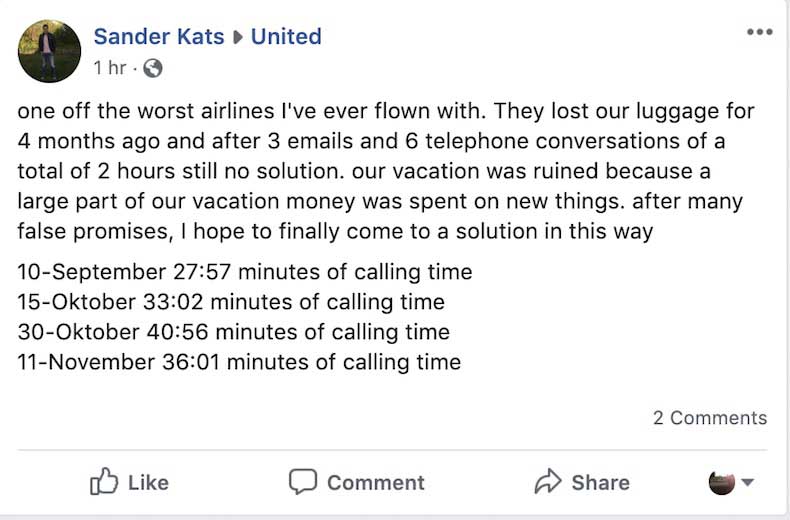
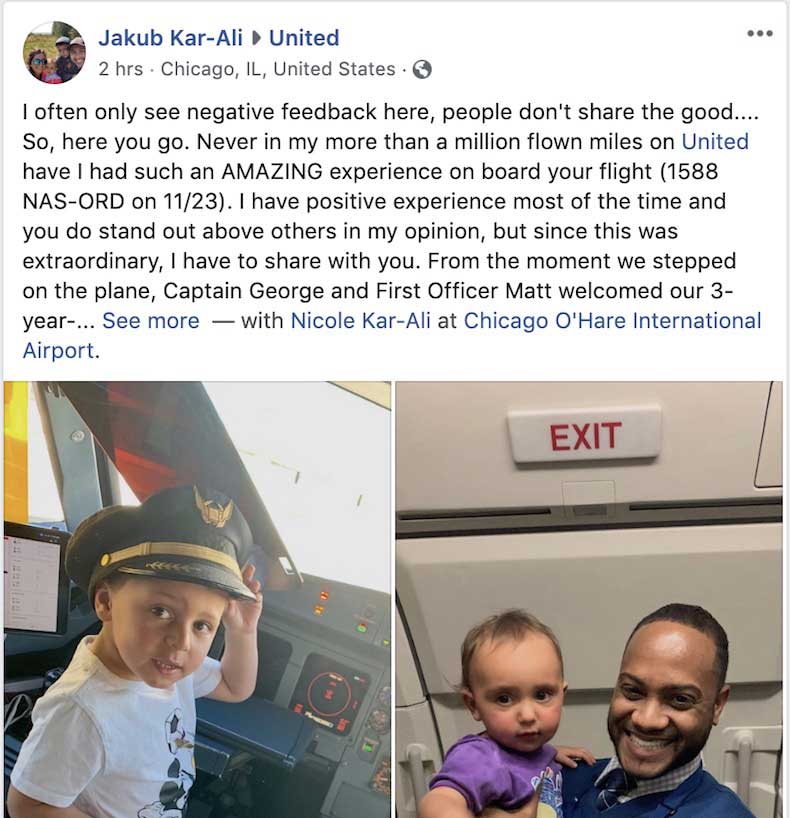
If you’d like to skip a step, there are listening tools available such as Google Alerts, Hashtagify, Social Mention, and Brand24.
Use this audience research to tap into what your audience says about your product: any problems they’ve had, any benefits and any gaps in service. This information can help confirm or add additional information to your audience profiles.
Importantly, you’ll need to track how your audience talks about the product: what words they use or standout phrases. Not only can you use this language research to narrow down keywords that match your audience’s intent, but you’ll also use your audience’s own words in your copy.
Product Analysis
Next, have a look at your product, whether it is a physical product, service or a different type of offer.
You should nail down:
- What are the features?
- What is the unique value your product offers?
- What benefits does your product offer?
- How is your product better than your competitors?
- Do you have any statistics that demonstrate how amazing your product is?
By knowing your product well, you can make the connection between the problem your audience is faced with and how your product offers to solve it – this is at the core of CRO marketing.
Know Thy Enemy
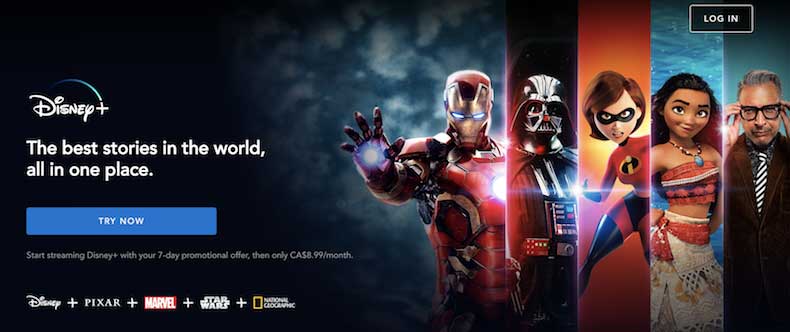
You’ll also need to do some research to understand the competitive landscape. Who are your main competitors, how are they talking about their products and how can you stand out?
Look at:
- What’s in their hero statement?
- How did they offer to solve the audience’s problem?
- How did they present their pitch and in which order?
- What claims do they make about their products?
- What is their call to action?
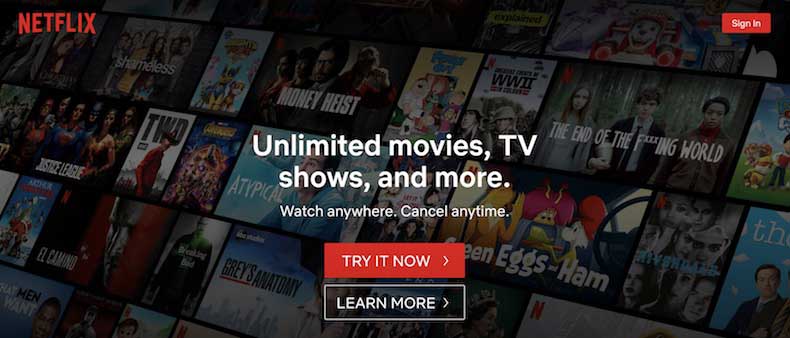
Go through the copy and note any gaps, pros and cons. To improve your ad or website CRO, you don’t want to sound like anybody else, or, at the very least, you’d want to say the same thing in a different way.
2. Message
Following conversion rate optimization best practices mean that your conversion copy will be ultra-focused and highly structured. Here are some tips and tricks on how you can craft your message.
Write to the Stage in Their Buying Process
Getting your audience to buy your product is often a multi-step process with conversion goals along the way, so you’ll have to map out the buyer’s journey through your marketing tools and website, and what conversions at each step will nudge them towards a purchase.
Based on where your audience is in their buyer’s journey—essentially how much research they have already done to find a product that solves their problem—your CRO optimized copy will be different.
Stage of awareness helps you focus your copy, how long it needs to be, and what your call-to-action is.
Problem aware: If they don’t yet understand your solution, reiterate their pain points and connect them to your solutions with free guides, checklists, videos and kits.
Solution aware – if they understand the problem and solution but haven’t found a product that matches the solution, demonstrate why your product is the best on the market using proof and evidence such as case studies, free samples, catalogues, free webinars.
Product aware – if they are comparing your products against others’, offer discounts, deals, free trials, demos, etc to make you stand out from competitors.
Most aware – if your audience knows your business, what you offer and your unique selling proposition, give them pricing right away.
Use Writing Templates
Think of conversion copywriters as scientists, who use formulas to get results.
There are templates for both structure and headlines.
A couple of examples of structure templates are AIDA – Attention, Interest, Desire, Action or PAS – Problem, Agitation and Solution.
“10 Lessons I Learned from X”, “The Ultimate Guide to X”, “How To X Like a Pro” are all examples of headline templates. You can find more here and here. Writing an engaging headline that your audience wants to click is difficult and time-consuming, so why not make use of proven templates. Don’t make your job harder than it has to be.
Use Psychological Tactics
There are certain tricks that can nudge people towards taking action and boost the CRO of your website. Formulating your offer in a way that seems exclusive, scarce, or time-limited are tactics that have stood the test of time and help compel your audience to take action immediately.
So-called ‘power words’ or ‘magnet words’ such as free, save, new, instantly are proven to grab people’s attention.
Use Data to Your Advantage
Data can be a powerful persuasive tool, so consider using data and statistics to make a point or tell a story. Also, if you make a claim, remember to back it up with evidence.
3. Test
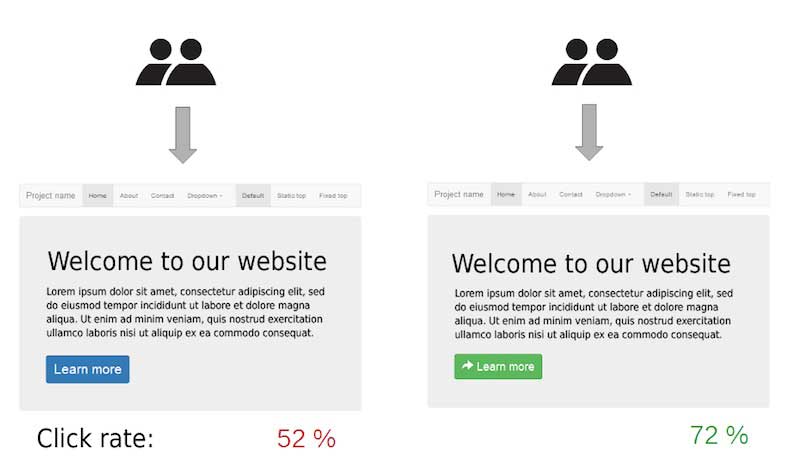
The science of conversion optimization and CRO marketing is about making incremental changes that improve your conversion rate, not sweeping changes. The way to make these improvements is to test one element at a time to understand which option gets the best response from your audience.
Here are the two most common ways to test your copy.
A/b Testing
This involves creating two versions of the copy you want to optimize, whether you’re focusing on a single page for website conversion rate optimization or a Google Ad. You might want to test which call to action converts better or you might focus on design elements. Traffic is divided between the two versions, and after a period of time, you can compare which version gets the best results.
Split Testing
Split testing is similar to A/B testing, but here you test more than two versions at the same time, so you can simultaneously test variations in copy and design elements.
You can read more about A/B and split testing here.
Keep in mind that this 3-step process is an ongoing process that should be repeated frequently for best results, so consider including it in your conversion rate optimization strategy.
After this tour of the conversion copywriter’s lab, it’s time for you to put on your own lab coat and start the process for yourself. It might seem daunting, but it works! According to an Econsultancy study, only 28% of businesses are satisfied with their conversion rates, so chances are that you can improve your conversion copy.
Are you ready to boost your conversion rate? Contact us today for a free consultation.
Need help with B2B Content?
Learn more about Konstruct's B2B Content Services
More B2B Content Resources
- Should You Replace Your Content Marketer with AI? Maybe…
- LinkedIn B2B Marketing Examples That Made Us Say, “$h!t, I wish I thought of that!”
- 9 B2B Social Media Dos and Don’ts That’ll Change Your Social Game
- Stop Snoozing on These 7 B2B Content Marketing Trends
- B2B Marketing Copywriting: 10 Tips for Writing Persuasive Copy for Today’s B2B Buyers
- 9 Wow-Worthy B2B Content Marketing Examples To Inspire Your Content Strategy
- 8 Irrefutable B2B Social Media Marketing Benefits
- The Proven Formula for a Rock-Solid LinkedIn Content Strategy
- Content Marketing Statistics: The Facts You Can’t Afford to Ignore
- 999,999 Tips for Creating On-Brand SEO Content


